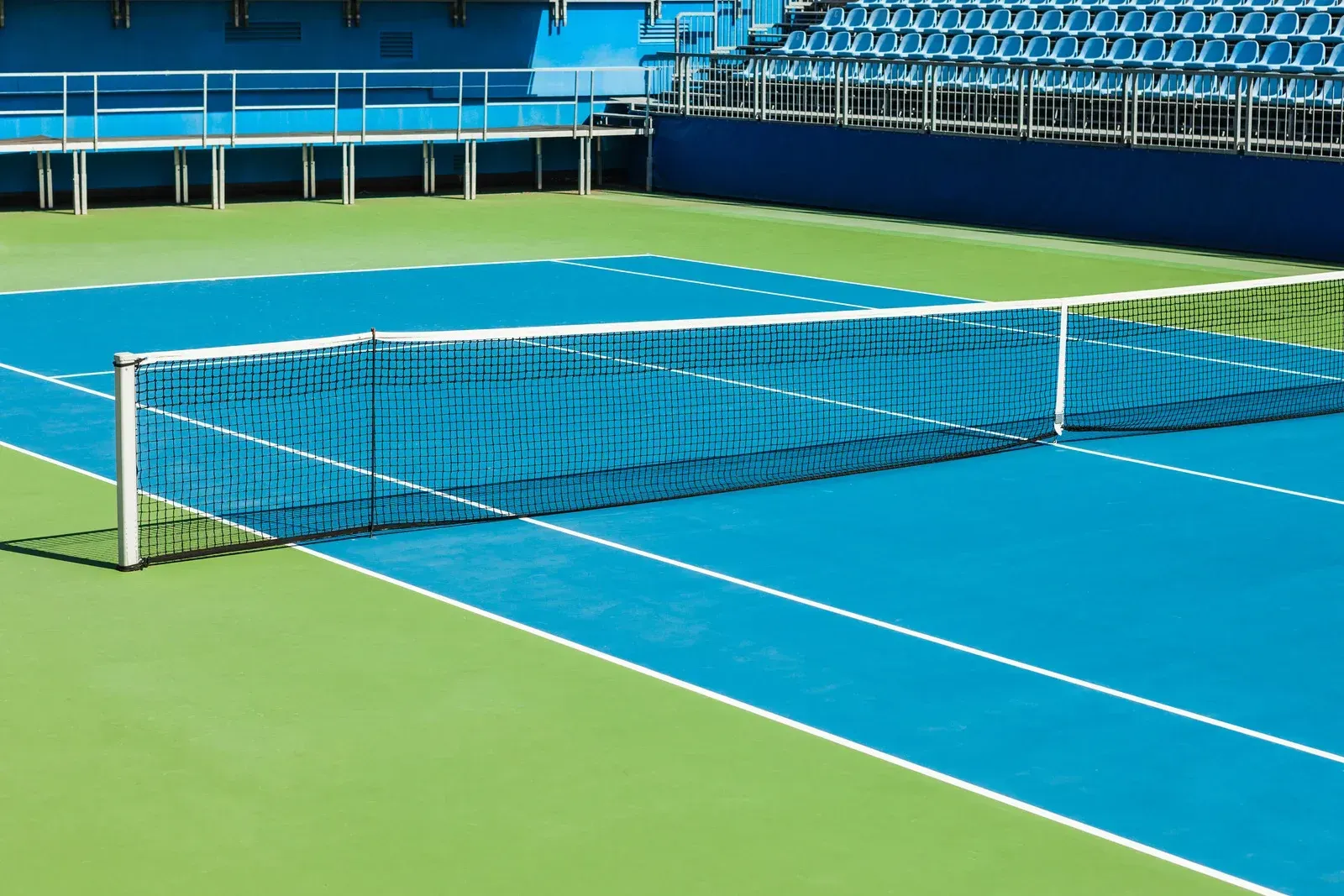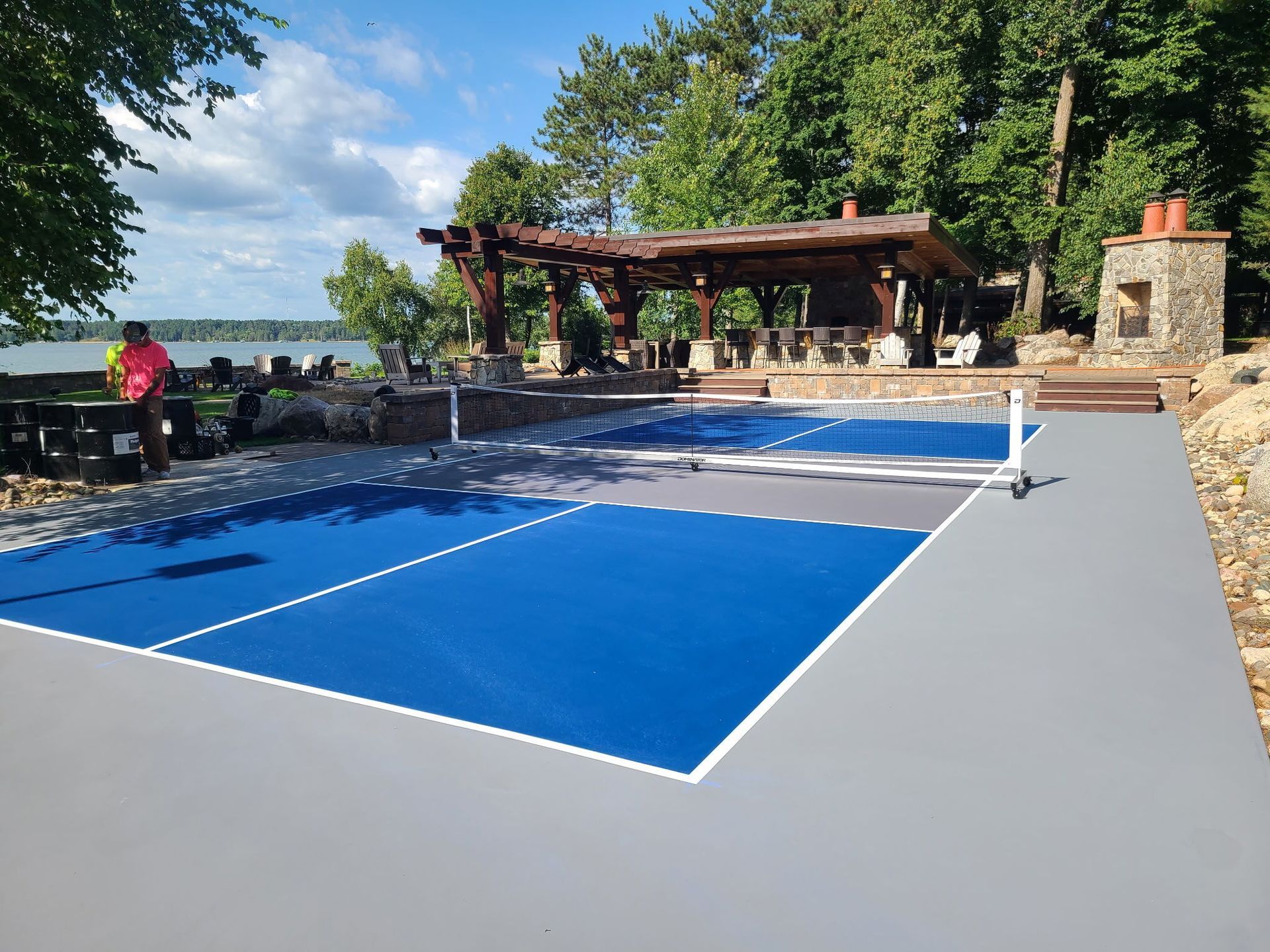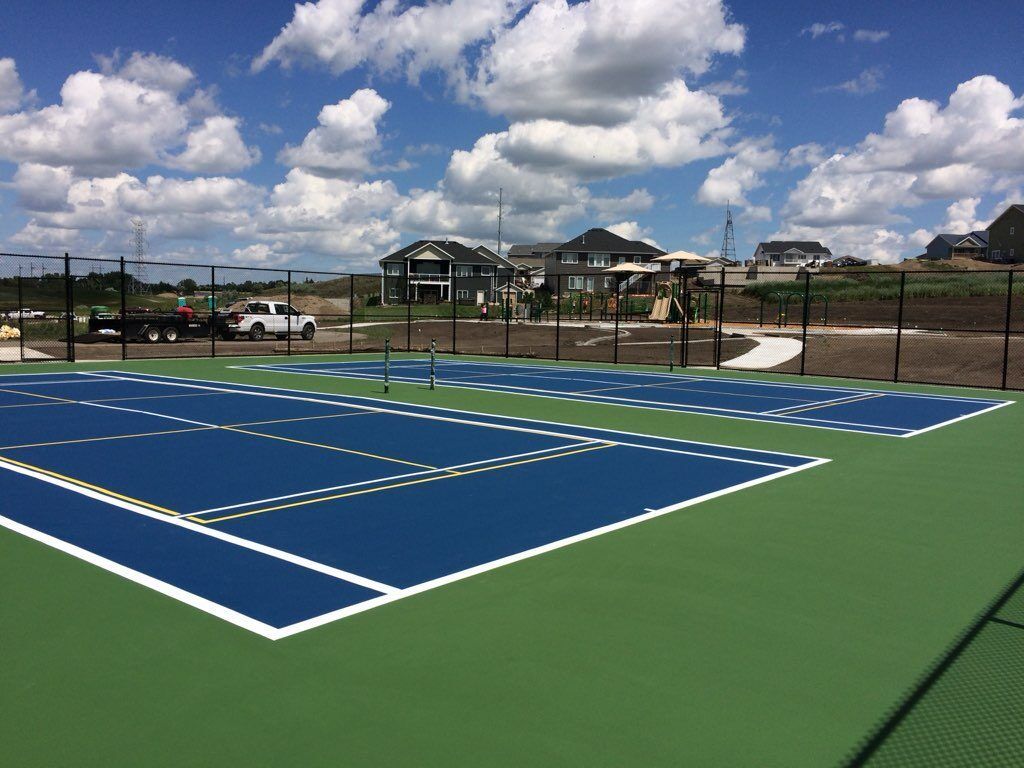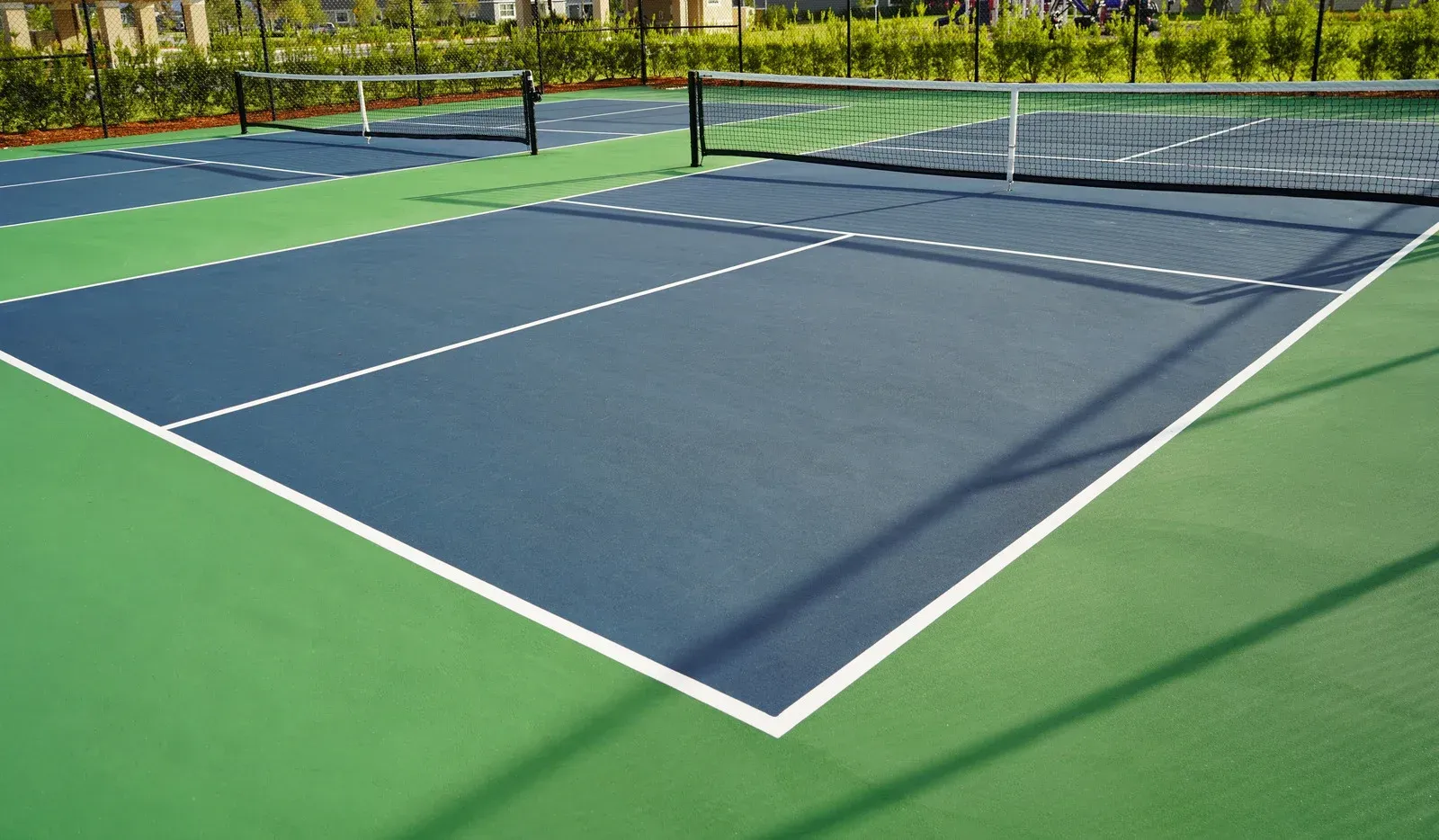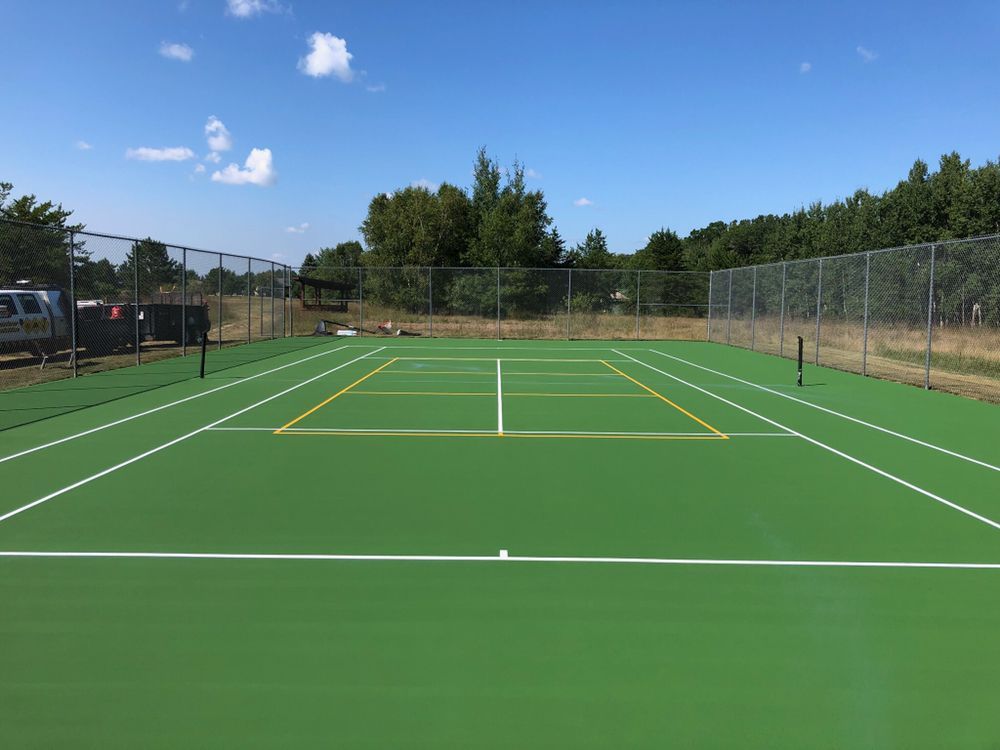10 DESIGN FEATURES TO CONSIDER FOR A SUPERIOR PICKLEBALL COURT
1. Court Dimensions
The official size of a pickleball court is 20 feet by 44 feet, and ensuring these exact dimensions is essential to meet regulation standards. A court built too small or too large disrupts the flow of the game, reduces accuracy, and makes the play unfair for athletes who practice or compete. Correct sizing keeps every match consistent and enjoyable.
2. Surface Material
Surface type directly impacts ball bounce, player safety, and durability of the court. Concrete and asphalt are common choices, but each requires coatings that improve traction and reduce strain on the joints. A good surface offers stability while resisting cracks or uneven spots that could interrupt play.
3. Proper Drainage
Without efficient drainage, standing water collects on the surface and creates hazards. Courts must have a slight slope or integrated system that directs water away. This simple design feature prevents damage, reduces slippery patches, and keeps the court ready for use after rain.
4. Lighting Placement
For evening play, bright and evenly placed lighting is essential. Poor lighting creates shadows that affect visibility and reactions. The best setup places lights high enough to illuminate without blinding players, ensuring matches continue smoothly after sunset.
5. Net System
A pickleball net should measure 36 inches high at the posts and 34 inches at the center. Sturdy net posts with tension adjustments guarantee the net remains in position during extended use. A reliable net system is crucial for both casual and competitive play.
6. Fence and Enclosure
Courts benefit from fencing around the perimeter to keep balls inside and spectators safe. A fence of at least 10 feet in height helps reduce interruptions during matches and clearly defines the play area. Enclosures also improve the professional appearance of the court.
7. Line Markings
Clear, non-slip line markings guide players and maintain the integrity of the game. High-quality paint that resists fading under sun or rain ensures that the lines remain visible season after season. Accurate markings improve fairness and reduce disputes during matches.
8. Color Contrast
Using two-tone coloring between the playing area and the out-of-bounds section improves visibility for athletes. A strong contrast helps players track the ball more effectively while making the court look polished and professional. Color choice also reduces glare from sunlight.
9. Seating and Viewing Areas
Adding benches or seating areas near the court improves comfort for players waiting for their turn and for spectators watching matches. Proper placement ensures the seating does not interfere with play while still keeping viewers engaged.
10. Surrounding Amenities
Features such as shaded rest spots, water fountains, and storage spaces elevate the playing experience. These small touches provide convenience and make the facility more attractive for leagues, tournaments, or community use.
Conclusion
Outdoor Specialties
designs and maintains superior
pickleball courts across Pine River and throughout Northern and Central Minnesota, ensuring every project combines accurate dimensions, quality surfaces, and thoughtful features that enhance safety, comfort, and long-term performance.


